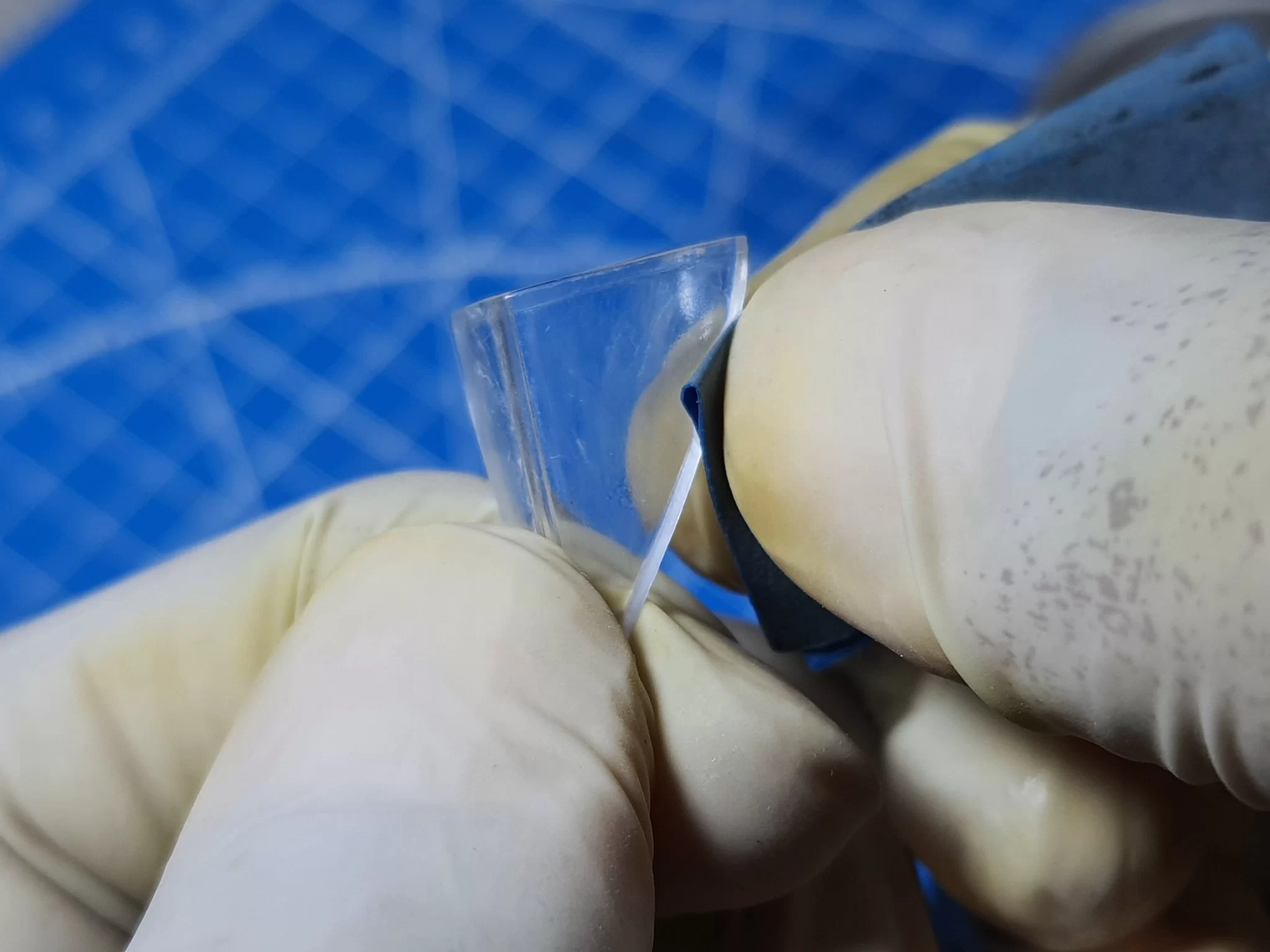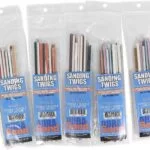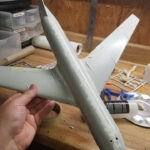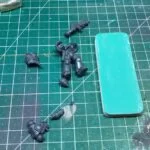Wet sanding miniatures (the right technique)

Painting minis enhances their small details. But, what happens when during painting, you notice some minor scuffs, a deep scratch, marring, or swirls on your mini’s surface?
Wet sanding is basically for prepping primer for basecoats. It can also add a glossy finish to minis. But, when you notice these little imperfections, will wet sanding them be a quick and safe way to correct small faults on your miniature’s surface?
Should you wet sand a miniature?
Wet sanding miniatures are simply the process of using sandpaper to smooth down their surface. But doing it with water to give them a polished look.
On small figures like Arcadia Quest and Magic’s the Gathering – Arena of the Planeswalkers, wet sanding can create a mess because they have hard-to-reach parts where files can better reach. Still, that doesn’t mean you should not wet sand your minis.
As on-scale model kits, wet sanding gives your miniature a flat mirror-like finish eliminating noticeable and non-noticeable defects on their surface.
Plus, it gives you a cleaner painted surface without dust and debris.
How to wet sand a miniature
As their name suggests, miniatures often have smaller detailed parts and hard-to-reach edges and interiors, which make them challenging to sand. So, before wet sanding your minis, here’s what you need to know:
What you will need
- Fine micro-mesh sandpaper
- Water as lubricant
- Rag
- Liquid dish soap
- Bowl or bucket
Steps to wet sanding miniatures
- Clean your mini first to remove built-up dust.
- Place your grit in order.
- Make sure the water is also close by with the liquid detergent near,
- Add a small amount of detergent to the water and mix well.
- Wet your hands with it and rub on the miniature’s surface. Then, dip the sandpaper in the mixture and rub it over your mini’s surface in a criss-cross, back-and-forth way. Be sure to do this lightly to avoid leaving scratch marks on your mini.
- Then let your mini dry.
Should you wet sand any type of miniature?
There’s no special application for the wet sanding technique. Simply put, you can wet sand any type of material but with care.
When wet sanding wood, be sure to use small amounts of water. Wood absorbs moisture quickly, and using too much will mean your minis will warp and deform. On metals, wet sanding also works flawlessly, but you may have to reapply water often.
Alternatively, ensure the sandpaper is always moist. Wet sanding works best on plastic because it does not retain moisture.
What grit should you choose for miniatures?
If you’ve built some House of Miniature kits, a mini replica of 18th-century furniture, you’ll find that the instruction booklet recommends using micro mesh sanders like the very fine sandpaper (220), extra fine ones (320), and or super fine 400-grit sandpaper. They aren’t too coarse and will easily reach small detailed parts like files.
Conclusion
Wet sanding is a necessary step when painting miniatures because it helps you achieve a realistic finish. The best part is that it works great on any material. Just make sure to use the right amount of water on woods and metals, and you’ll be sure to get a near-perfect ultra-glossy finish.
Don’t want a matte finish on your mini? Wet sanding minis only take a few steps, and you’ll see a noticeable difference in your small figures instantly.





